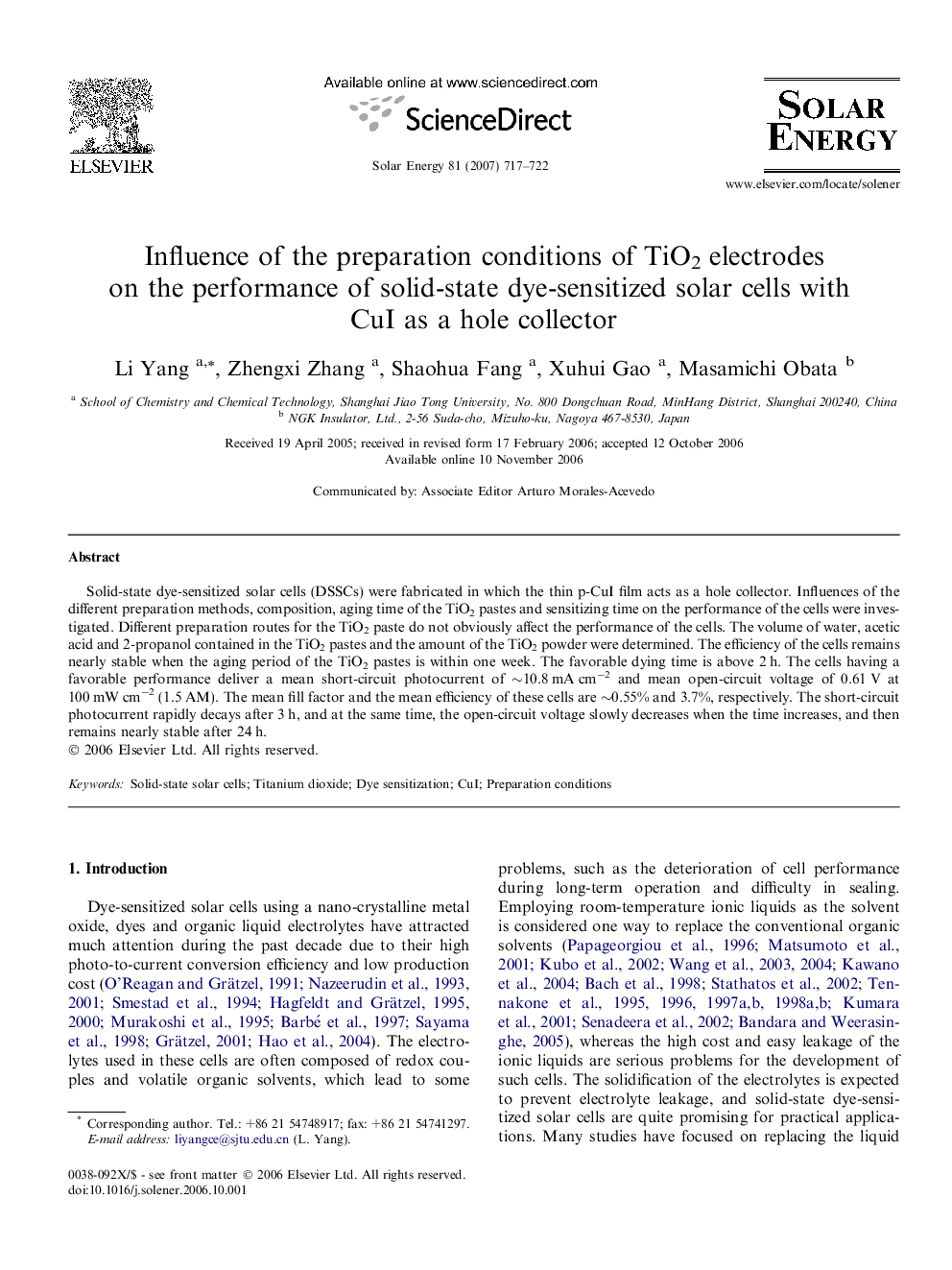| Article ID | Journal | Published Year | Pages | File Type |
|---|---|---|---|---|
| 1551695 | Solar Energy | 2007 | 6 Pages |
Abstract
Solid-state dye-sensitized solar cells (DSSCs) were fabricated in which the thin p-CuI film acts as a hole collector. Influences of the different preparation methods, composition, aging time of the TiO2 pastes and sensitizing time on the performance of the cells were investigated. Different preparation routes for the TiO2 paste do not obviously affect the performance of the cells. The volume of water, acetic acid and 2-propanol contained in the TiO2 pastes and the amount of the TiO2 powder were determined. The efficiency of the cells remains nearly stable when the aging period of the TiO2 pastes is within one week. The favorable dying time is above 2Â h. The cells having a favorable performance deliver a mean short-circuit photocurrent of â¼10.8Â mAÂ cmâ2 and mean open-circuit voltage of 0.61Â V at 100Â mWÂ cmâ2 (1.5Â AM). The mean fill factor and the mean efficiency of these cells are â¼0.55% and 3.7%, respectively. The short-circuit photocurrent rapidly decays after 3Â h, and at the same time, the open-circuit voltage slowly decreases when the time increases, and then remains nearly stable after 24Â h.
Related Topics
Physical Sciences and Engineering
Energy
Renewable Energy, Sustainability and the Environment
Authors
Li Yang, Zhengxi Zhang, Shaohua Fang, Xuhui Gao, Masamichi Obata,
